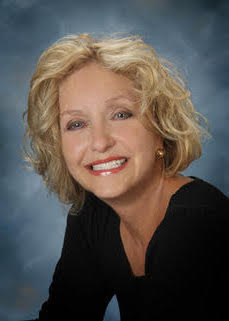Law firms are making the same mistakes with women and millennials, lawyer says

Susan Smith Blakely. Photo by Wayne Hill Photography.
As we enter 2020, I am reflecting on more than a decade of work on behalf of young lawyers. Although I am proud of my body of work, which includes three books for women lawyers and a fourth book for all millennial lawyers, I also am aware of how little we have learned about developing talent in those 10-plus years.
It makes me think of my car. I recently received a notice from the manufacturer alerting me to a recall. It seems that the backup camera display had a problem. So, I rushed right into the dealership for the repair, knowing that I needed to avoid a collision. After all, damage control is a good thing.
The law profession also needs damage control. Law firm leadership should be looking in the rearview mirror and changing policies to address what is reflected there. But that does not seem to be the case.
In 2007, I was hopeful. I had just retired after more than 25 years in private practice and public service, and I had identified my follow-up pursuit as an advocate for young women lawyers. I had lived the challenges and knew that many of the obstacles I had experienced still existed.
I researched books online, in bookstores and in libraries to find out what was out there in terms of good advice for women entering the profession. I found nothing, with the exception of a report by the Women’s Bar Association of the District of Columbia titled Creating Pathways to Success. I have been a member of that group since 1979, and I am so proud of the work it continues to do.
But there were no books. There was not a single helpful book to prepare young women for the unique challenges awaiting them in law practice. A book comparing the kind of practices women wanted to the kind of shoes they liked to wear was nothing short of insulting. You had your stiletto practice, your ballet flat practice or your boat shoe practice.
Young women lawyers needed more. So I decided to give it to them in the form of a comprehensive project called Best Friends at the Bar. This project for women lawyers includes three books; individual coaching; and speaking engagements at law schools, law firms and law organizations through the country.
More than a decade later, much of my hope has turned to dismay. It was not that I wanted the profession to make it easy for women; it was that I wanted the profession to act like women mattered. I wanted leadership to understand the challenges and to respond with policies to address the issues that were keeping the majority of women lawyers from staying at large law firms and advancing there. Issue-spotting followed by solutions seemed like a reasonable expectation of lawyers.
Today, 36% of attorneys in America are women, according to the 2018 Law360 Glass Ceiling Report. But a 2018 partner compensation survey—conducted by legal recruiters Major, Lindsey & Africa in cooperation with legal market intelligence and research specialist Acritas—reported a 53% difference in average pay between male and female lawyers across large U.S. law firms.
Is that because they are less competent? I don’t think so, and the statistics do not support that conclusion. Women now represent more than 50% of law school graduating classes, and women enter the profession in equal numbers to men.
No, the problem for women is one that will not change. They have the babies and are the primary caretakers of them. They have to find balance between home and career in a way that safeguards the care and upbringing of their children. It is no small task for any woman, but it is especially difficult for those who are staring down billable hour requirements and new client-generation expectations.
I hear the chorus of law leadership responses. “Not our problem. We are not here to address societal issues.”
But actually, it is their problem. If loss of talent is factored in, it is a big problem. Replacing a departing senior BigLaw associate costs a firm at least $500,000, depending on who you ask. Those figures include rehiring and replacement salaries, incidental costs associated with transitioning work, headhunter fees, and time devoted to interviews and evaluations. That is a lot even for BigLaw.
There you have it. Damage control. Just like my car.

The year 2020 is the centennial of the 19th Amendment. A hundred years after getting the vote, what do women’s legal rights and representation look like? The ABA Journal’s yearlong series examines these issues.
Additional Resources
• 19th Amendment Centennial of Women’s Right to Vote
• ABA Commission on the 19th Amendment
Real progress
But there is some good news. When I look through my rearview mirror, I am grateful for some accomplishments I have seen for women lawyers. I am grateful for the efforts toward work-life balance, and I don’t care that they also have benefited men. I like men, particularly well-balanced ones.
Telecommuting opportunities, parental leave and on-site daycare are positive accomplishments, and these programs have been particularly impactful for the young women in practice. They are the caretakers, not only for their children but also for their aging parents, and theirs is a particularly tough row to hoe.
And although the percentage of female equity partners in law firms still hovers around 20%, we are seeing more female managing partners of law firms today. And one out of three law school deans are women today, which sets a good example for future women lawyers.
Women are slowly making their way to the top, but the sacrifices they make for that privilege are weightier than the sacrifices for most of their male colleagues. For women lawyers who have children, many of them have had to turn blind eyes to excessive time spent away from their families and the level of child care they once had anticipated.
On balance, there is still a long way to go. A long way to truly recognize the needs of women lawyers, who wish to raise families and also continue in practice and rise to management levels. A long way to recognize the value that women bring to law firms. A long way to embrace research that shows that diversity enhances decision-making and that women start out as 50% of the law profession workforce before that figure is dwindled away by the unique needs of their lives.
Mommy tracks do not meet those needs. Implicit biases that fail to recognize disparities of opportunities between male and female practitioners do not meet those needs. Skewed fee-sharing and client-generation policies do not meet those needs. Rather, they hold all of us back and chip away at our professionalism.
Over the years, I have lectured at many law firms, law schools and law organizations, and too often I have seen the importance of these issues fall on deaf ears.
Too many times, apparent enthusiasm was just lip service or an attempt to impress business clients with in-house law departments populated by disillusioned female law firm alumni who wanted to see more and to believe in change.
The women from Venus and the men from Mars continued to represent alternative universes—and there was no real incentive to raise levels of understanding and bridge the gap.
Business as usual was A-OK, and the same impediments to progress that I had encountered as a young woman associate in the early 1980s and that continued until my retirement in 2006 were ever-present.
Intersecting issues
More recently, I turned my Best Friends at the Bar project to the subject of millennial lawyers, including their values and what they want from their legal employers. In my research, I discovered an overlap in the values of women lawyers and millennial lawyers, and my concern had morphed into concern for all young lawyers.
These lawyers shared an interest in work-life balance, they wanted to make differences in their communities, they led nuanced lives that were not all about the zero-sum game, and they had keen desires to learn from others and be mentored toward success.
By that time, I had closely observed lawyers of the millennial generation, both male and female, in my work. That familiarity, combined with my research, led me to a shocking discovery. It was not just a gender thing. It was a lack-of-leadership thing.
Seasoned practitioners, including what is left of baby boomer lawyers and the Generation X lawyers who followed them, are ignoring the needs of entry-level lawyers in the same way that they ignored the needs of women practitioners.
These “leaders” still are not proficient in mentoring and developing talent. They still do not take time away from the billable hour to welcome young talent into the profession and create effective policies to guide them toward successful careers. They still do not understand how to protect their investment in talent and the cost of their negligence.
Is that what we have come to expect from a profession that is defined by impersonal, competitive and self-absorbed behavior? Should we be satisfied with that result? I don’t think so.
We are service providers, and service is about others. Service to clients involves understanding their needs, extending helping hands and caring about outcomes that do not involve money and power.
What about service to our colleagues? What about nurturing talent with the kind of attention and guidance that we enjoyed as young lawyers? What about safeguarding the future of our profession?
At some point, we will need to wake up to the fact that losing the talent of women and millennial lawyers at current rates is very bad business and irresponsible. It is also just plain stupid. The way that we treat human capital matters.
How we develop talent is the law profession’s climate change issue. If we ignore it for too long, it will become a crisis. It is a new decade, and the clock is ticking.
So that is what I see clearly in my rear view. So glad I got my car fixed. So glad I did damage control.
Susan Smith Blakely is a former partner, law career counselor and author of the Best Friends at the Bar book series for female lawyers. Her most recent book is What Millennial Lawyers Want: A Bridge from the Past to the Future of Law Practice.
ABAJournal.com is accepting queries for original, thoughtful, nonpromotional articles and commentary by unpaid contributors to run in the Your Voice section. Details and submission guidelines are posted at “Your Submissions, Your Voice.”
Your Voice submissions

The ABA Journal wants to host and facilitate conversations among lawyers about their profession. We are now accepting thoughtful, non-promotional articles and commentary by unpaid contributors.

